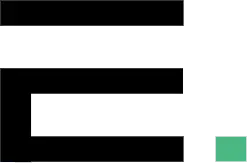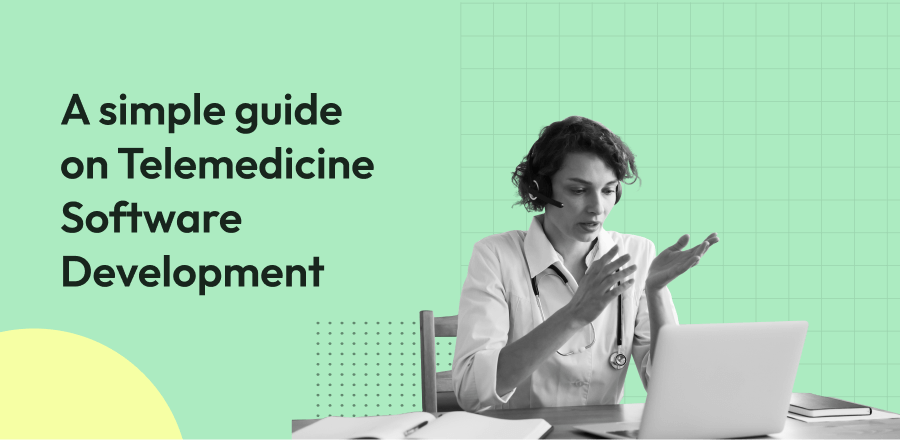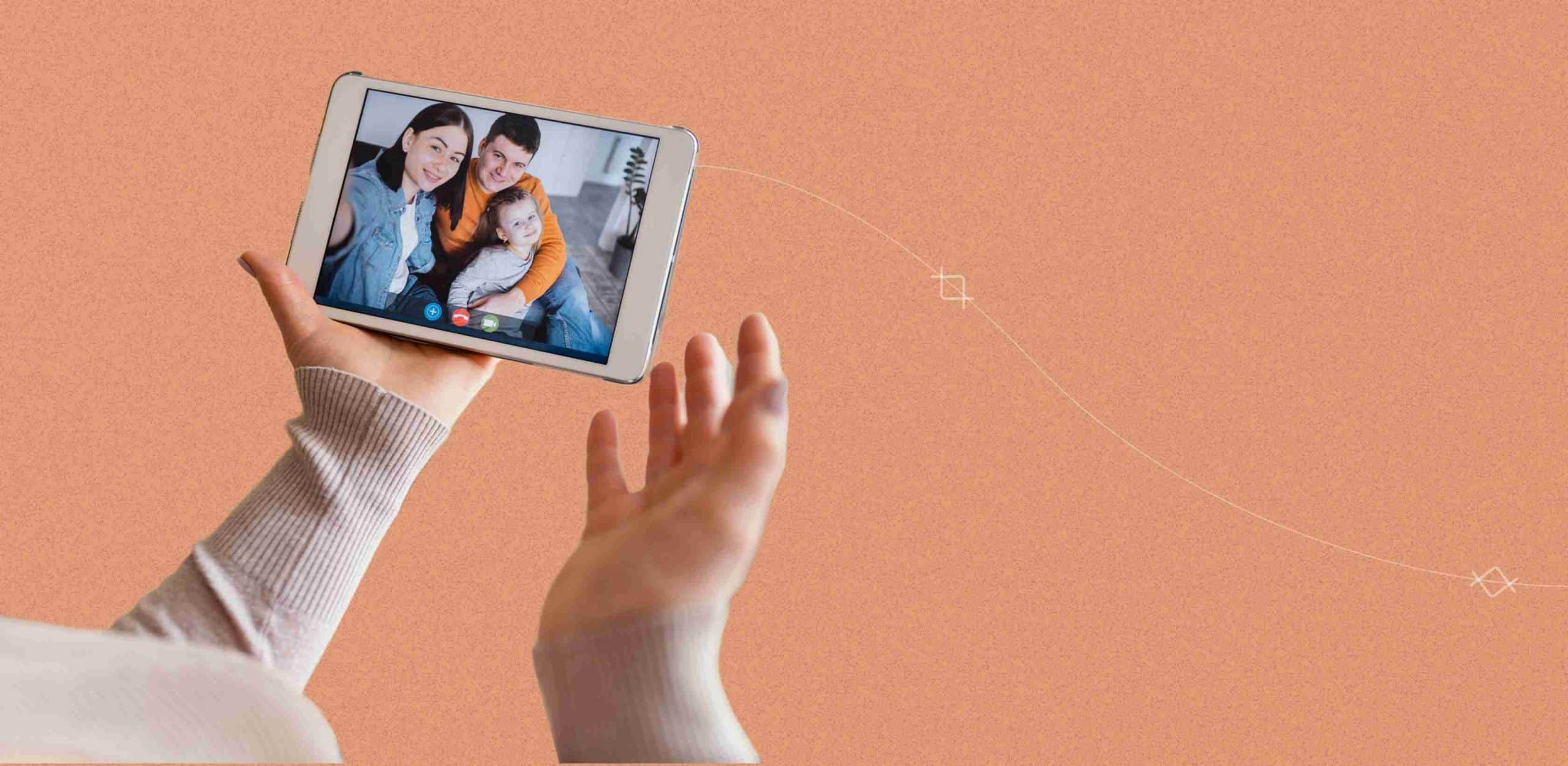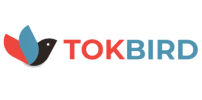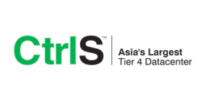Telemedicine software development has widely impacted the healthcare sectors with various innovations, providing easy access of healthcare services for the common people. Healthcare firms or let’s say hospitals, clinics, etc, have been revolving around a new phase of this century, a pandemic and post-pandemic period. Online healthcare services came up and became a regular thing in common lives. Making people’s lives easier, Telemedicine continued, continuing its hiking journey. Experiencing the merits of online healthcare services, people prefer Telemedicine services more than ever. The provision of getting healthcare remotely got the likes of the modern world. It’s not just common people, doctors and hospitals have also been benefitting from the telemedicine software solutions.
For choosing the right Healthcare Software Solutions, it is best to have an idea of Telemedicine Software Development and the benefits that come along with it. Therefore, here’s a guide on how to create a telemedicine platform, its core features, benefits, challenges, and monetization strategies.
What is Telemedicine?
Telemedicine is remotely bringing medical care to the patients. It is the use of software and technologies to track and treat patients instead of in-person visits. The main focus is on lowering the workload of healthcare providers and firms by delivering on-demand access to different medical services for people. Irrespective of the location, Healthcare Software solutions enable people to reach their physician at any time.
It is a time that the Telemedicine market is at its peak of success due to the increased usage and needs. In 2021, the telemedicine market valued to be $72.7 billion, and in 2026, it will be $168.4 billion globally. All the virtual healthcare solutions came up as a savior in the social distancing scenario, and people had taken them to their lives seamlessly. And this became one of the reasons for the hiking success of the Telemedicine market.
Healthcare technologies
Remote Patient Monitoring (RPM) : Remote Patient Monitoring or RPM uses cloud computing technology that makes the patient-generated data easier and hands out them to doctors. The RPM solution primarily identifies symptoms early and makes medical assistance possible for patients remotely.
Video conferencing : The technologies such as Video Conferencing allow the users to get virtual consultations in the cases of confirming the diagnosis. Rather than waiting in a tiring long queue, people can easily schedule an online with their preferred doctor.
Store-and-Forward : The Store-and-Forward facility allows the recording, storing, and transmitting of the patients’ medical records to another healthcare expert at another location for examination to create a treatment plan without actually visiting them in person. Also, the analysis of visible symptoms through photos is made possible by this method.
Telemedicine Technology Trends
The most demanded Healthcare Technology solutions, such as Internet of Things, Augmented Reality, and Artificial Intelligence, are discussed briefly here.
Internet of Things (IoT) : The digital devices with IoT connected, such as wearable and other medical devices, will improve the monitoring of health conditions, diagnosis, prescription adherence, etc. These devices will easily track blood pressure, temperature, heartbeat, and other attributes and send the results to their physician.
Augmented Reality (AR) : Augmented Reality enables the visualization of healthcare information in a multi-dimensional way. Image recognition helps doctors diagnose their patients in real-time screening analysis.
Artificial Intelligence (AI) : There are AI-based chatbots that make the delivery of medical care to patients faster. The consultation becomes easier between doctors and their patients. Besides, it can answer questions regarding the doctor’s schedules, competency, and other things that the patients need to know.
How does Telemedicine Software work?
The Telemedicine Software development is to create a suitable platform for healthcare professionals and patients. Generally, the Telemedicine Software solutions can be divided into four types:
Planned care : After an in-patient visit, this software type runs for a patient checkup to keep the doctor notified of the body conditions of a patient. Therefore, it allows the physician to follow up on the treatment plan. The patients can send voice messages or texts to their physician to clear their doubts regarding the treatment.
Self-care tech : This type of software allows the users to track their oxygen level, heart rate, blood pressure, or amount of pills to be consumed. The self-care tech solutions prove to be efficient in caring for long-term health conditions such as cardiac failure or asthma. However, these solutions are incorporated with IoT devices.
On-demand urgent care : The On-demand urgent care software solution comes up with audio and video support, Google calendar, scheduling features, document management, and the EHR system.
Mental support : Increasing physical and mental overexertion in people increased the popularity of this type of software. It makes possible of the delivery of mental health services to the person needed them, making them feel safe and secure.
Features of Telemedicine Software
For patients
Registration : When it comes to the sign-in feature of the Telemedicine apps, the registration process must meet the EHR integration norms and allow the document uploads. The registration can be done through email, mobile, or third-party services like Facebook. It is best to consider two-step authentication via email or SMS for data security.
Profile management : A user must add their personal details for synchronizing with the existing hospital records. A patient’s EHR is the must-have data in the patient records so that the doctors can evaluate the patient’s medical history and physical conditions.
Text messaging : Patients can contact their doctors through text messaging to ask for advice on minor issues. This will allow the doctors to answer the messages in their free time without breaking the other necessary appointments. The users can attach photos and files if needed.
Video meeting : Video meeting is one of the key features of Telemedicine Software. The audio and video should be of high quality so that the doctors can see the symptoms and determine them correctly. The software that you develop has to automatically adapt the video quality to provide seamless and flawless service. You can apply the streaming protocols such as Real-time Messaging Protocol (RTMP) and Web Real-time Communication (WebRTC).
Scheduling : Patients can track and manage appointments with their doctors using this feature. It should allow the users to schedule their appointments according to the physician’s availing time, and it also allows the cancellation of the appointments. It is best to integrate the Google calendar so that the users will be able to reschedule the meetings and see doctors’ free time slots in the calendar.
Notifications : The users can get notifications about their monthly visits, health queries, and prescription renewals, other than calendar notifications. It also helps you to inform your customers about future updates.
Reviews : Patients should have a chance to leave their reviews about their in-visits with doctors. It is best to include a rating system for the users to rate their doctors so that, based on this feedback, the healthcare experts can monitor their performance and improve their service quality. Also, it allows the other users to make more considered choices and find reliable professionals.
Payment : You can integrate different payment methods into the healthcare app, like custom payment services or third-party services like MasterCard or Visa. One of the merits you have while using the third-party service is that they take care of fast, secure transactions and are easy to implement. If you plan to integrate a custom payment service, it is better to join hands with an expert software development company.
For doctors
Doctors’ profile : Doctors need to set up their profiles in the healthcare apps, with their qualifications, specialization, experience, and other necessary details. Client reviews and rates should be included in the profile.
Communication : Telehealth Software solution implies two-way communication between the physicians and patients. Both of them should be able to contact one another with their medical needs and queries.
Electronic Health Records (EHR) : For the accurate diagnosis of a patient, the doctors must be provided with access to the patient’s EHR. Since the data included in the EHR can be sensitive, ensure that the physician downloads them from your database.
Internal data exchange : In some cases, the doctors need to hand their patients to another doctor. Therefore, there will be an exchange of information regarding the patient, and this exchange must be smooth and secure.
Benefits of Telemedicine Software
For patients
Accessibility : Receiving their much-needed healthcare services makes people’s lives more convenient and less risky. With the Telemedicine Software, healthcare services will be available to people all the time, from any part of the world. From the simple technology solutions like the healthcare apps that track blood pressure to the remote-controlled medical robots for simplifying surgery are the Healthcare software wonders.
Convenience : Healthcare Software solutions provide healthcare services for people in remote areas too. The patients get high-quality services to their locations. The patients don’t need to wait in a long tiring queue or schedule appointments to visit their doctors.
Cost-effective : The adoption of Telemedicine solutions increased during the COVID pandemic days. The situation pushed the healthcare providers to offer various Telehealth service packages to deliver instant medical care cost-effectively.
For doctors
Medical record-keeping : Custom Telemedicine software makes things easy for doctors to store and access patients’ EHR. These software solutions guarantee seamless data access and transmission in the case of necessities.
Paperwork management : Telemedicine solutions also allow companies to automate administrative processes. As most of the back-office functions will be automated, the form fillings and other internal documents won’t be necessary. This may lead to higher profit and quality treatment.
Time management : The in-app scheduling and push notifications will allow better time management and work-life balance. The doctors can make schedule changes, browse patients’ medical history, arrange meetings, or call in for sick leaves with just a few clicks.
Ready to bring your telemedicine idea to life? Schedule a free consultation with our experts and get personalized advice tailored to your project's needs.
Telemedicine Software challenges
Some of the challenges that the users may face while using a Telemedicine Software solution are listed below.
Video quality : In case of patients’ physical damage, a full HD video is vital. Thus, a good device camera is essential in the Healthcare digital solution. However, bandwidth issues and invalid codes could cause poor video quality.
Security : The foremost security that needs to be provided is the safety of personal users’ data, and for this, you can apply different telemedicine protocols, tools, and algorithms. Some key points to consider:
Encryption
Using encryption can decrease the chances of negligent data loss and cyber-attacks. AES 128 Bit and SHA 256 are the popular standards for Telehealth App Development.
Patient education
The patients must use a strong password, include virus protection and firewalls, and should be aware of the data security standards of the healthcare apps they are using.
Compliance
Develop a Telemedicine platform that complies with all regulatory standards.
Self-assessment
Every time a software is updated, you must perform self-examination and look for any errors in order to guarantee complete data protection.
Regulatory compliance : Telemedicine Software solutions need to be implemented according to specific regulatory and medical standards since it processes patients’ personal data. These rules are to protect critical information and prevent cybersecurity violations.
Below is the list of country-specific standards that your telemedicine solution must agree to.
DICOM (International standard to manage medical imaging data)
ICD-10 (International Classification of Diseases)
Data Protection Directive 1995/46/EC
IEC 62304 (international)
PIPEDA (Canada)
HIPAA (United States)
The medical application should be compliant with OWASP and FHIR requirements. In order to transfer patients’ EHRs and EMRs within and outside healthcare organizations.
Telehealth Software Development process
In order to create a user-centric healthcare app, you need to follow the appropriate steps.
Planning : Before selecting the right platform or technology, try to define the purpose of your future product. The purpose of the product must bring value to the potential users. Later, analyze your competitors and market leaders. Paying attention to their strong and weak sides might help you in attracting more leading healthcare firms. Get to know more about your target audience. You can segment your audience through careful research and analysis, and this can guide you in creating a solution that will meet users’ expectations.
Discovery phase : Since clients and developers have different visions of required features, the Discovery phase plays a vital role in Telehealth Software development. Business analysts scrutinize your project concept and business goals. After collecting all the details, they prepare project specification details about the product, which include design, tech stack, features, number of third-party integrations, etc. Analyzing all the details, you get a final estimate of your desired product.
UI/UX design : UI/UX designers set the core user scenarios, visualizing the main features of Telemedicine software that are convenient for potential users. Using the collected details, they prepare a prototype of your desired app. It shows how the platform looks in the future, performs, and its capabilities. At last, the designers create appealing user interface elements.
Product development : Product development includes developing the server-side of the product, APIs integration, and converting attractive UI design into working software. Starting with Minimum Valuable Development (MVP), you can create and launch the app with minimum investments.
Testing : The QA engineers conduct various tests to verify the product’s functional requirements and find and fix possible bugs and malfunctions. They check software security and regulatory compliance. They enter the results into the bug report and transfer them to the developers to fix the bug.
Delivery and maintenance : After passing all the stages, the application is delivered to the people and stakeholders for testing and acquiring feedback. Later on, based on the input, improvements will be made.
Expense on developing a Telemedicine Software solution
The cost may vary according to the software type, features’ complexity, design, integrations, and software developers’ rate. On average, the cost of development will be between $150,000 and $250,000 and above. The expense will always depend on your requirements and the type of Telemedicine app that you want to create.
Choose the best reliable partner for your project development
Knowing the necessary details on Telehealth Software development keeps your business on the right track. Also, keeping up with the trends is essential to be top in the market. All this will lead you to the best suitable partner in developing the right Telehealth Software solutions. The end success will always depend on the vendor’s experience and domain expertise.
Let's transform your business for a change that matters.
F. A. Q.
Do you have additional questions?
Telemedicine software typically includes technologies like Remote Patient Monitoring (RPM), Video Conferencing, and Store-and-Forward systems. It may also integrate with emerging technologies such as the Internet of Things (IoT), Augmented Reality (AR), and Artificial Intelligence (AI).
To create a telemedicine app, you need to follow a structured process that includes planning, the discovery phase, UI/UX design, product development, testing, and maintenance. It's important to define your target audience, understand market needs, and ensure the app complies with healthcare standards and regulations.
A telemedicine system typically includes features for both patients and doctors: registration, profile management, communication tools (text messaging, video meetings), scheduling, notifications, and payment options for patients, and profile setup, communication features, access to Electronic Health Records (EHR), and internal data exchange for doctors.
System requirements include high-quality video and audio capabilities, secure data encryption, compliance with healthcare standards (like HIPAA, DICOM, ICD-10), reliable cloud storage for data, and integration with healthcare devices and EHR systems.
Key features for patients include user registration, profile management, text messaging, video conferencing, appointment scheduling, notifications, reviews, and integrated payment options.
For doctors, essential features include profile management, communication tools, access to patient EHRs, and internal data exchange capabilities for collaborating with other healthcare professionals.
Benefits for patients include increased accessibility to healthcare services, convenience, and cost-effectiveness, especially for those in remote locations or with mobility issues.
Doctors benefit from telemedicine software through efficient medical record-keeping, streamlined paperwork management, and improved time management due to in-app scheduling and notifications.
Challenges include ensuring high-quality video for consultations, securing patient data, complying with various healthcare regulations, and educating patients about the use and security of telemedicine apps.
The cost of developing a telemedicine software solution varies based on the software's complexity, design, integrations, and the rates of the software developers. On average, it may range from $150,000 to $250,000 and above, depending on specific requirements.

